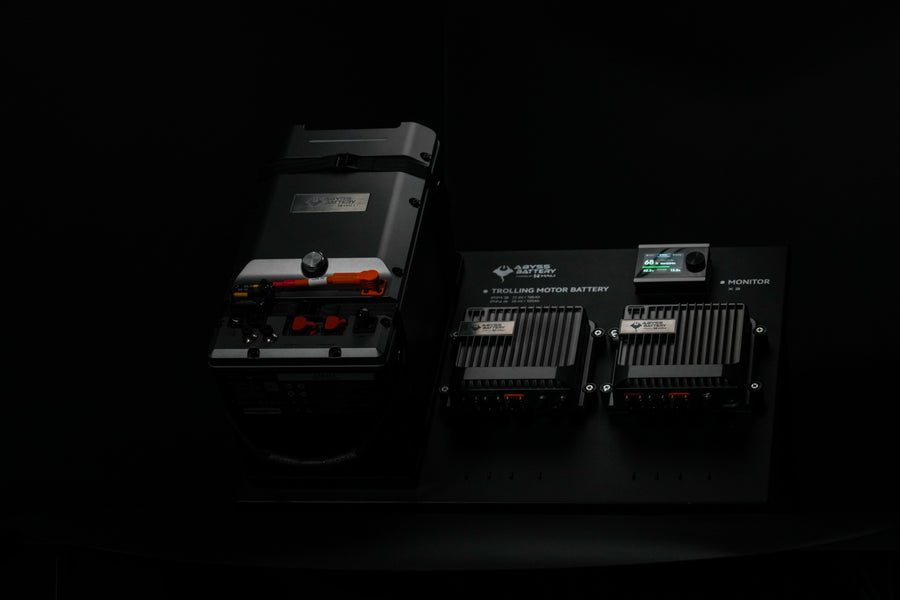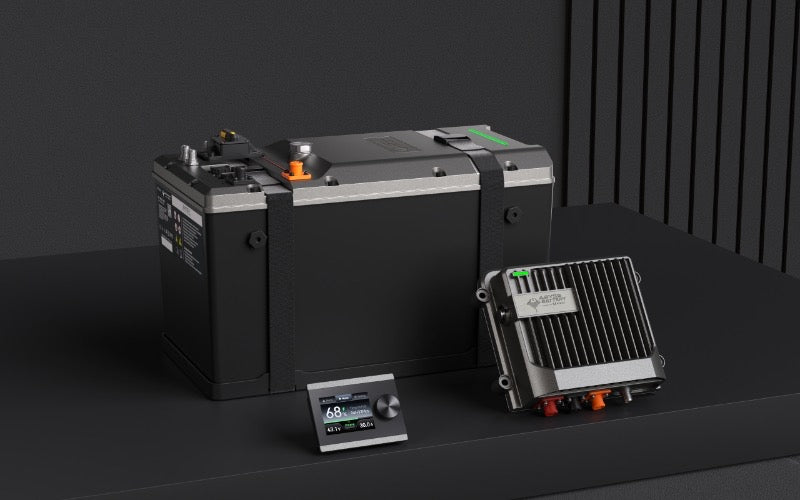How To Install a Trolling Motor Lithium Battery

Do you need to install a trolling motor lithium battery? We can help! This guide will explain how to select the best battery for your trolling motor, the basic steps of installation, and the benefits that lithium batteries can offer boaters.
Selecting the Correct Battery for your Trolling Motor
Before we get into installing the battery, it’s important to know which one is right for your trolling motor. For a long time, boaters had just two options for marine batteries: lead-acid and AGM batteries.
Now, there’s a new battery technology on the market that’s leading boaters to make the switch in droves—that technology is lithium batteries. The lithium battery is cutting-edge and better than lead-acid and AGM batteries in practically every way, from its depth of discharge to its battery life and more. There’s no doubt that if you want to get the most value out of a new trolling motor battery, lithium is the way to go.
Which Lithium Battery Size Should I Choose for My Boat?
Boaters may have questions regarding the ideal battery for their respective boat sizes. While several factors determine which battery is right for your situation, we recommend the 36V battery for many trolling motors.
For boats 22–32 feet in length, the 36V 60AH battery is the ideal choice for power capacity, and it’s lightweight. We also offer 36V 80Ah, 105AH, and 120AH batteries for larger vessels. Whichever battery size you need, you’ll find it at Abyss Battery.
Connecting a Lithium Battery to Your Trolling Motor & Charger
Connecting a lithium battery to your trolling motor and charger is rather easy and straightforward. When installing, it’s always best to consult the instructions and manual that came with your specific battery, but we’ve outlined the basic steps below.
Inspect Wiring
First, you will want to ensure the wiring and connections for your battery, trolling motor, and charger are all solid and clean. Check that the cables don’t have any frays and that the connections are corrosion- and dirt-free.
If you’re using a new battery, this shouldn’t be a problem. However, if your connectors aren’t in new condition, consider replacing them with a marine-grade cable.
Apply Washers & Connect Cables
Remove the bolt from the lithium battery and apply a lock washer before attaching the standard washer. Take the connection to the charger and connect it, then place the trolling motor connection last.
Attaching the trolling motor connection last ensures it’s close to the battery and can draw the most power. Once everything is in place, attach the cables and the bolt to the battery connectors.
Coat & Tighten the Connection
Once the cables and bolts are in place on the battery, take a small amount of dielectric grease and put it on the connections. You don’t have to apply a large amount of grease—just enough to coat the connectors properly.
Dielectric grease helps improve connectivity between the cables and the battery, and removes any potential moisture. After applying the grease, it’s as simple as tightening the connection; some prefer to do this by hand, but using tools to get the connection as firm and snug as possible is recommended.
Follow the same steps for the other side of your lithium battery and cable, and you’re done!
Understanding the Benefits of a Lithium Trolling Battery
We’ve now covered why a lithium battery is the best option for a trolling motor, but which benefits does it bring to the table over its competitors?
Weight Savings
The first thing boaters typically notice when switching from lead-acid to lithium batteries is how much smaller and lighter they are in comparison. Out on the water, it’s always beneficial to have less weight, even if you’re not using a speed boat.
Lithium batteries are up to 70 percent lighter than their lead-acid counterparts, and they’re much smaller, leaving more room for tackle, fishing accessories, and fish. If you have a series of batteries for your boat, you could be cutting hundreds of pounds of weight from your vessel by switching to lithium units.
Greater Power Capacity
The lithium battery may be smaller and lighter, but it still packs a greater punch than any lead-acid unit could muster. Typically, a lead-acid battery expends around 50 percent of its power capability in approximately an hour. After that, the battery’s voltage significantly drops and its utility plummets.
On the other hand, a lithium battery can discharge much more of its power capacity without suffering a significant loss in voltage. Our trolling motor batteries, for instance, can discharge nearly 100 percent of their power with consistent voltage. You can depend on a lithium battery to keep working as long as you need it on those long days of fishing from sunrise to sunset.
Longer Lasting
Not only do lithium batteries last longer on a single charge, but they have a longer lifespan of discharge cycles to offer. Perhaps the one thing that gives some boaters pause regarding lithium batteries is the initial investment, as they’re more expensive than lead-acid batteries.
While that may be true, the long-term value of lithium batteries is obvious as they last much longer than any competitors. A lead-acid battery has a lifespan of approximately 1,000 charge cycles in a best-case scenario, although it’s usually closer to 500. On the other hand, a lithium battery averages close to 5,000 charge cycles, lasting as long as 10 lead-acid batteries.
Temperature-Resistant
Lithium batteries offer greater performance, longevity, and even durability when compared to lead-acid competitors. Lithium batteries are much more stable and, therefore, durable to changing temperatures, consistently outlasting lead-acid batteries in temperature tests.
In heat or cold, a lead-acid battery loses power and discharges faster, but the temperature is no problem for lithium batteries. In side-by-side tests, a lithium battery in extreme temperatures still outperforms a lead-acid unit in ideal conditions. If you need a battery you can depend on for those days when the heat is sweltering or the cold is absolutely frigid, there’s no better choice than a lithium trolling motor battery.
Find What You Need at Abyss Battery
We hope this guide on how to install a trolling motor lithium battery is useful and adequately explains the advantages of lithium batteries over lead-acid units. If you have any further questions about lithium batteries or installation, feel free to contact our helpful and expert staff at Abyss Battery!





Bought lithium battery for my husband. Needs an indoor battery charger what do you suggest ? Also needs to hook up a trolling motor dept finder & live well to it. Suggestions needed
Leave a comment